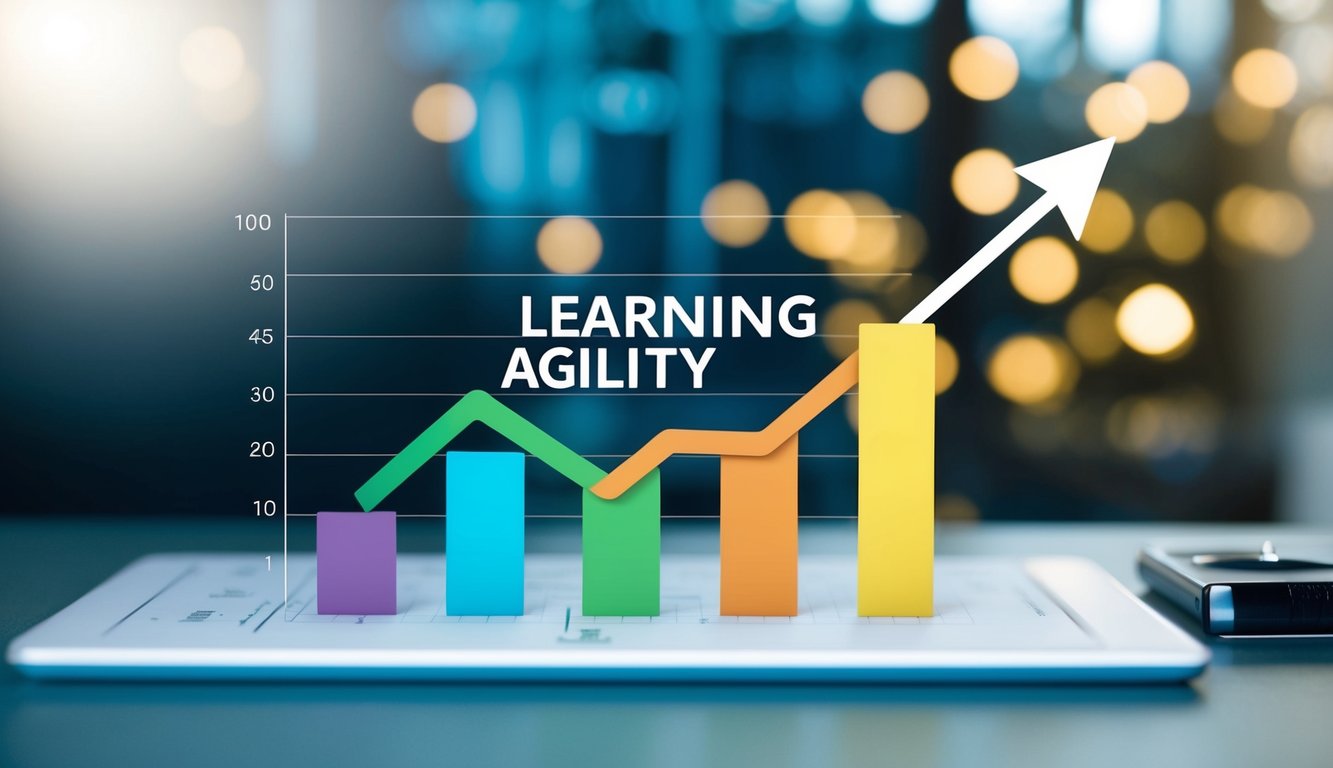Did you know that 94% of employees would stay longer at companies that invest in their learning? This statistic reveals the hidden value of workplace learning programs beyond just skill development.

Companies that implement effective learning measurement frameworks see up to 6x better returns on their training investments. They track specific performance metrics and align programs with business goals. Modern businesses need ways to measure formal and informal learning impacts across their organizations.
Learning analytics help organizations track everything from employee engagement to skill development to business performance improvements. These metrics clearly show how learning programs directly contribute to company growth and success.
Key Takeaways
- Learning measurement frameworks must align with specific business goals and performance metrics
- Regular tracking of both formal and informal learning outcomes proves ROI
- Data-driven learning analytics enable better decision-making about training investments
Defining Learning Agility and Its Importance to ROI

Learning agility drives measurable business value through enhanced employee performance, adaptability to change, and stronger talent retention rates. Companies that cultivate learning agility see tangible financial returns through reduced training costs and increased productivity.
Understanding Learning Agility
Learning agility refers to an employee’s ability to learn from experiences and apply those lessons to new situations quickly. This skill enables workers to navigate unfamiliar challenges effectively.
People with high learning agility show strong problem-solving skills and readily embrace new technologies. They actively seek feedback and adjust their approaches based on results.
Key components of learning agility include:
- Mental flexibility
- Pattern recognition
- Quick adaptation to change
- Active knowledge-seeking
- Willingness to learn from mistakes
Linking Agility to Business Outcomes
Learning agile employees contribute directly to improved business metrics. Companies report 15-20% higher productivity from workers who demonstrate strong learning agility.
These employees require less training time and resources, leading to reduced onboarding costs. They also help organizations adapt faster to market changes and new competitive challenges.
Measurable business benefits include:
- Faster project completion rates
- Reduced implementation time for new systems
- Lower training expenses
- Higher customer satisfaction scores
Agility’s Role in Employee Engagement and Retention
Employees with high learning agility show greater job satisfaction and a stronger commitment to their organizations. They tend to seek out new responsibilities and growth opportunities within their current companies.
Organizations that support learning agility through development programs see retention rates improve by up to 25%. These employees become valuable mentors to others and help build a culture of continuous improvement.
Engaged, agile employees display:
- Higher initiative levels
- Increased innovation
- Stronger peer relationships
- Greater career advancement
Strategies for Measuring the Impact of Learning Initiatives

Effective measurement strategies help organizations track and improve their training programs through data-driven insights and performance metrics. Learning impact measurement drives better decision-making and demonstrates value.
Identifying Key Performance Indicators (KPIs)
Organizations need clear metrics to evaluate training success. Important learning metrics include completion rates, assessment scores, and skill development.
Key KPIs to track:
- Course completion rates
- Knowledge retention scores
- Time to competency
- Certification achievements
- Application of skills on the job
For maximum effectiveness, training participation rates should stay above 80%. Regular skill assessments help measure knowledge gains over time.
Leveraging Learning Analytics
Modern learning management systems provide rich data insights. Analytics tools track engagement patterns, progress, and performance across training programs.
Key analytics to monitor:
- Time spent in courses
- Module progression rates
- Assessment performance trends
- Popular content areas
- Learning path completion
Real-time dashboards allow quick identification of knowledge gaps. Data visualization helps spot patterns in learning behaviors and outcomes.
Assessing Employee Performance and Productivity
Training effectiveness shows in improved job performance and productivity gains. Regular performance reviews and productivity metrics reveal learning impact.
Productivity indicators include:
- Task completion speed
- Error reduction rates
- Quality improvements
- Customer satisfaction scores
- Revenue per employee
Managers should conduct quarterly performance assessments. Employee feedback surveys provide insights into skill application and confidence levels.
Project success rates often increase by 15-25% after targeted training programs.
Analyzing the Financial Aspects of Learning Investments

Smart learning investments boost business performance through measurable financial gains. Organizations that track and analyze their training costs can make data-driven decisions to maximize returns.
Calculating Cost Savings and Efficiency
Learning and development programs require significant upfront investment but generate cost savings through improved employee productivity.
Direct cost reductions include:
- Decreased employee turnover
- Reduced hiring and onboarding expenses
- Lower operational errors
- Minimized compliance violations
When employees master new skills quickly, time savings multiply across teams. A well-trained workforce completes tasks faster and makes fewer mistakes.
Understanding the ROI of Learning
Key performance metrics help quantify learning program success:
- Completion rates
- Knowledge retention scores
- Skills assessment results
- Employee productivity gains
Organizations must track both short-term and long-term ROI indicators. Impact studies reveal sustained performance improvements from training initiatives.
Success metrics should align with specific business goals and objectives.
Connecting Learning Initiatives to Revenue Growth
Effective training programs directly influence revenue through enhanced employee capabilities and customer satisfaction.
Sales teams with updated product knowledge achieve higher conversion rates. After communication skills training, customer service representatives deliver better experiences.
Revenue growth indicators include:
- Increased sales per employee
- Higher customer retention rates
- Improved project delivery times
- New market expansion success
Companies can track quarter-over-quarter revenue changes in areas targeted by learning programs.
Integrating Learning Agility into Long-Term Business Growth
Learning agility drives sustainable business growth through strategic skill development and adaptable workforce capabilities. Companies that invest in learning programs see measurable returns in productivity, innovation, and market competitiveness.
Aligning Learning with Strategic Goals
Measuring learning impact requires clear alignment between training initiatives and business objectives. Organizations must identify skill gaps that directly affect their strategic priorities.
Key alignment factors:
- Targeted skill development programs
- Clear performance metrics
- Regular progress assessments
- Stakeholder feedback loops
Learning initiatives should focus on developing competencies that support specific business goals. This targeted approach ensures resources are invested in areas with the highest potential return.
Fostering a Culture of Continuous Improvement
Daily learning routines help employees stay current with industry changes while boosting engagement levels. Organizations benefit from creating structured opportunities for skill development.
Essential Elements of Learning Culture:
- Peer learning networks
- Knowledge sharing platforms
- Regular feedback sessions
- Recognition for skill advancement
Teams that embrace continuous learning show higher innovation rates and better problem-solving abilities. This creates a competitive advantage in rapidly changing markets.
Preparing for the Future of Work through Upskilling
The NexGen ROI model helps organizations track the effectiveness of upskilling programs. This data-driven approach ensures training investments deliver tangible business value.
Modern upskilling strategies include:
- Digital skills training
- Cross-functional capabilities
- Leadership development
- Adaptive thinking skills
Organizations must anticipate future skill requirements and prepare their workforce accordingly. This proactive approach helps maintain market leadership and workforce readiness.
Frequently Asked Questions
Business leaders need clear metrics and methods to evaluate how learning programs affect their company’s success. ROI calculations help prove the value of investing in employee development.
What metrics can be used to assess the impact of learning agility on business growth?
Companies track six key data types: reaction, learning application, business impact, ROI, and intangibles.
Employee productivity rates, time-to-proficiency for new skills, and innovation metrics show the effects of learning agility.
Revenue growth, market expansion success, and new product development speeds demonstrate business impacts.
How does one quantify the return on investment (ROI) in learning and development initiatives?
Learning programs face scrutiny due to their costs and hard-to-track outcomes.
ROI calculation compares program costs against monetary benefits like increased sales, reduced errors, and improved efficiency.
Data analysis must follow a transparent chain showing how learning activities connect to business results.
What are the key indicators for evaluating business agility in an organization?
Speed of change adoption and implementation of new processes reflect organizational agility levels.
Market responsiveness, decision-making velocity, and innovation rates demonstrate adaptability.
Employee flexibility scores and cross-functional collaboration metrics indicate workforce agility.
What methods exist for measuring the effectiveness of learning and development programs?
Pre and post-training assessments track knowledge gains and skill improvements.
On-the-job performance monitoring shows how well employees apply new abilities.
Project completion rates and quality metrics reveal practical learning applications.
Why are measurements of ROI crucial in learning initiatives for organizational development?
Business leaders expect proof that learning investments deliver value.
ROI data helps justify budgets and gain support for future development programs.
Clear metrics guide program improvements and resource allocation decisions.
In what ways can learning agility influence overall business performance and productivity?
Fast skill acquisition lets companies adapt quickly to market changes and opportunities.
Teams with high learning agility solve problems more effectively. They also innovate faster.
Improved employee capabilities lead to better customer service and operational efficiency.

